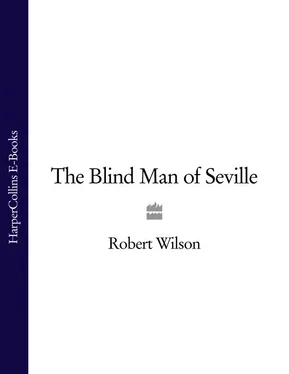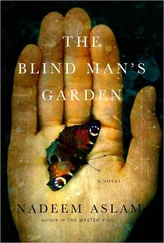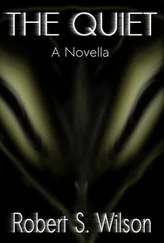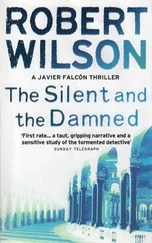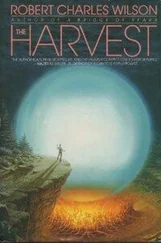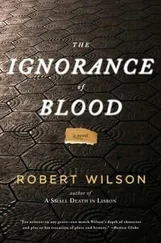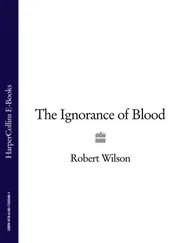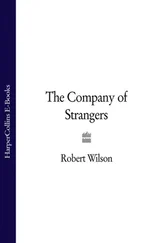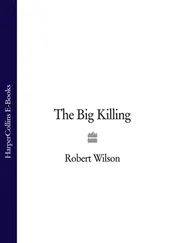The Blind Man of Seville

For Jane and Mick and José
Cover
Title Page ROBERT WILSON The Blind Man of Seville
1
2
3
4
5
6
7
8
9
10
11
12
13
14
15
16
17
18
19
20
21
22
23
24
25
26
27
28
29
30
31
32
33
34
ACKNOWLEDGEMENTS
About The Author
Praise for The Blind Man of Seville
Also by Robert Wilson
AUTHOR’S NOTE
A Small Death in Lisbon Robert Wilson
The Big Killing Robert Wilson
Instruments of Darkness Robert Wilson
A Darkening Stain Robert Wilson
Blood is Dirt Robert Wilson
The Company of Strangers Robert Wilson
The Blind Man of Seville Robert Wilson
The Silent and the Damned Robert Wilson
Copyright
About the Publisher
Thursday, 12th April 2001, Edificio Presidente, Los Remedios, Seville
It had started the moment he’d walked into that room and had seen that face.
The call had come at 8.15 a.m. just as he was preparing to leave home — one dead body, suspected murder and the address.
Semana Santa. It was only right that there should be at least one murder in Holy Week; not that it would have any effect on the crowds of people following the daily convergence of quivering Holy Virgins on board their floats en route to the cathedral.
He eased his car out of the massive house that had belonged to his father on Calle Bailén. The tyres rattled on the cobbles of the empty, narrow streets. The city, reluctant to wake up at any time of year, was especially silent at this hour during Semana Santa. He entered the square in front of the Museo de Bellas Artes. The whitewashed houses, framed in ochre were silent behind the high palms, the two colossal rubber trees and the tall jacarandas, which had not yet flowered. He opened his window to the morning still fresh from last night’s dew and drove down to the Guadalquivir River and the avenue of trees along the Paseo de Cristóbal Colón. He thought he might be approaching contentment as he passed by the red doors of the Puerta del Príncipe in the baroque façade of the Plaza de Toros, La Maestranza, which was about to see the first bullfights in the week leading up to the Feria de Abril.
This was as close as he got to happiness these days and it held firm as he turned right after the Torre del Oro and, leaving the old part of the city behind, crossed the river, which was misty in the early-morning sunshine. At the Plaza de Cuba he veered away from his regular route to work and headed down Calle de Asunción. Later he would try to recapture these moments because they were the last of what he’d thought, until then, had been a quite satisfactory life.
The new and very young Juez de Guardia, the duty judge, who’d been waiting for him in the pristine, white-marbled entrance hall of Raúl Jiménez’s large and expensive apartment on the sixth floor of the Edificio Presidente, did try to warn him. He remembered that.
‘Prepare yourself, Inspector Jefe,’ he’d said.
‘For what?’ Falcón had asked.
In the embarrassed silence that followed, Inspector Jefe Javier Falcón had minutely scrutinized the surface detail of the Juez de Guardia’s suit, which he decided was either Italian or a leading Spanish designer, someone like Adolfo Dominguez, perhaps. Expensive for a young judge like Esteban Calderón, thirty-six years old and barely a year in the job.
Falcón’s apparent lack of interest decided Calderón that he didn’t want to appear naive in front of the forty-five-year-old Inspector Jefe del Grupo de Homicidios de Sevilla, who’d spent more than twenty years looking at murdered people in Barcelona, Zaragoza, Madrid and now Seville.
‘You’ll see,’ he said, with a nervous shrug of his shoulder.
‘Shall I proceed then?’ asked Falcón, maintaining proper procedure with a judge he’d never worked with before.
Calderón nodded and told him that the Policía Científica had just been let into the building and that he could go ahead with his initial observations of the scene.
Falcón walked down the corridor leading from the entrance hall to Raúl Jiménez’s study thinking about preparing himself without knowing how it was done. He stopped at the door to the living room, frowned. The room was empty. He turned to Calderón who had his back to him now, dictating something to the Secretaria del Juez while the Médico Forense listened in. Falcón looked into the dining room and found that empty, too.
‘Were they moving out?’ he asked.
‘Claro, Inspector Jefe,’ said Calderón, ‘the only furniture left in the apartment is a bed in one of the kids’ rooms and Sr Jiménez’s complete study.’
‘Does that mean Sra Jimenéz is already in the new house with the children?’
‘We’re not sure.’
‘My number two, Inspector Ramírez, should be here in a few minutes. Send him straight through to me.’
Falcón proceeded to the end of the corridor, suddenly conscious of each footstep on the polished parquet flooring in the empty apartment. His eyes were fixed on a hook on the bare wall at the end of the corridor under which was a square lighter than its surrounds, where a picture or mirror had been hanging.
He eased his hands into a pair of surgical gloves, snapped the cuffs against his wrists and flexed his fingers. He turned into the study, looked up from his cloudy latex palms to find Raúl Jimenéz’s terrible face staring at him.
And that was when it had started.
It wasn’t a question of looking back at that moment and realizing later that it had been a turning point. The change was not subtle. A difference in body chemistry has a way of making itself immediately felt. Sweat came up inside his gloves and at a spot high on his forehead just out of the hairline. The taut pattering of his heart stopped him and he began to find oxygen in the air difficult to come by. He hyperventilated for some seconds, pinched at his throat to try to encourage a better intake. His body was telling him that there was something to fear while his brain was indicating otherwise.
His brain was making the usual dispassionate observations. Raúl Jimenéz’s feet were bare, his ankles secured to the chair legs. Some furniture was out of place, at odds with the rest of the room. Indentations in the expensive rug, Persian, showed the normal position of the chair. The lead to the TV/video was stretched taut because the rolling cabinet was some metres from its normal position by the wall socket in the corner. A ball of cloth, which looked like socks tracked with saliva and blood, lay on the floor by the desk. Windows, double-glazed, were shut, curtains drawn back. A large soapstone ashtray sat on the desk, full of pinched stubs and whole, clean filters which had been broken off from the cigarettes whose pack lay alongside, brand name Celtas. Cheap cigarettes. The cheapest. Only the cheapest for Raúl Jimenéz, owner of four of the most popular restaurants in Seville, with two others in Sanlúcar de Barrameda and Puerto Santa María down on the coast. Only the cheapest for Raúl Jimenéz in his ninety-million-pesetas apartment in Los Remedios, overlooking the Feria ground, with his celebrity photographs hanging on the wall behind his leather-inlaid desk. Raúl with the torero El Cordobés. Raúl with the TV presenter Ana Rosa Quintana. Raúl, my God, Raúl with a carving knife behind a jamón which had to be a top quality Pata Negra because he was flanked by Antonio Banderas and Melanie Griffith, who was looking completely appalled at the cloven hoof pointing at her right breast.
Читать дальше
